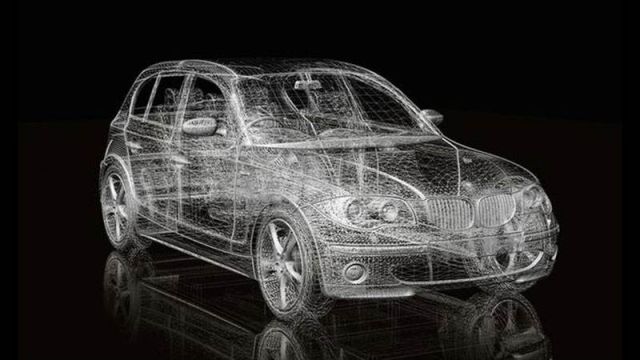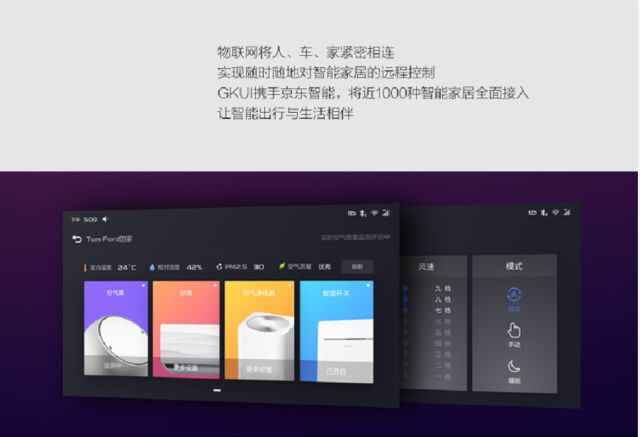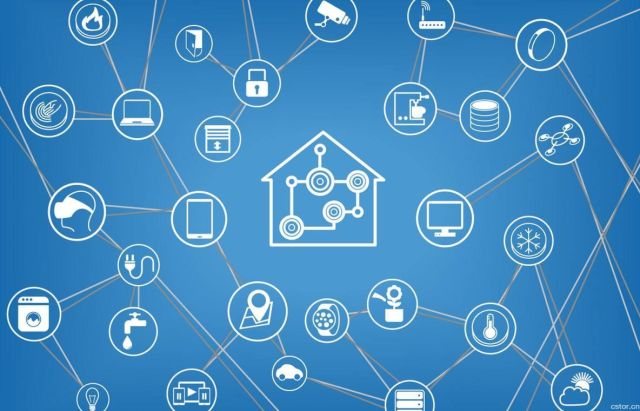

When it comes to vehicle networking, we often associate this technology with autonomous driving. Vehicles connect with each other in the cloud, greeting one another as they pass by, and reducing the possibility of traffic accidents through precise communication regarding distance and steering.
However, at the nascent stage of autonomous driving development, different manufacturers were using different vehicle networking systems, creating barriers that made it difficult for vehicles to communicate with each other. Yet, the application prospects of vehicle networking extend far beyond this; in addition to connecting vehicles, there is endless imaginative space, especially after the integration of AI technology.
Imagine a typical driving scenario: hands firmly gripping the steering wheel, eyes on the road, ears alert, while thoughts drift to whether the air conditioning is too cold, how boring the radio program is, how much windshield washer fluid remains, or whether a detour is needed for shopping on the way home…
When driving, our primary interaction tool—our hands—are fully occupied, yet there is ample room for decision-making regarding both the vehicle itself and the destination. This makes the vehicle the best technical reaction vessel. Through NLP technology, drivers can converse with their vehicles and even interact with other IoT devices through the vehicle.

Compared to communication between vehicles, the development of smart vehicle networking, which integrates more technologies, is progressing more rapidly. Previously, Ford integrated Amazon’s voice assistant into its SYNC in-car information system, and Hyundai collaborated with Google Home. Recently, JD.com announced a partnership with Geely to incorporate JD’s smart vehicle networking solutions into Geely’s self-owned brand products, connecting to JD Alpha’s smart platform to access capabilities such as AI, big data, and IoT.
What reactions will occur between vehicle networking and these new technologies? At a basic level, adjustments to air conditioning, wipers, and windows can be made via voice when a driver cannot free their hands. However, if that is all there is, the technological evolution of vehicle networking would merely be limited to voice parsing and transcoding.
Such applications could have been realized several years ago. The recent advancements in AI applications are attributed to an increase in sensors and data accumulation, with more powerful computing capabilities and refined computational models providing AI with better perception and decision-making abilities. Combining these capabilities with vehicle networking has led to chemical reactions that extend far beyond just driving.
We can use the collaboration between JD.com and Geely as an example to categorize the ecological reactions of vehicle networking into three layers.
The First Layer of Reaction: Seamless Communication Between Vehicle and Driver
The essence of intelligence starts with people, and smart vehicle networking is no exception.
In addition to basic control of the vehicle via voice, the combination of in-car sensors and cloud services allows users to gain a better understanding of the vehicle’s condition. JD’s smart vehicle networking solution includes a series of smart travel services such as vehicle management, data analysis, and cloud hosting.

In the past, car owners would only check and repair their vehicles during fixed inspection times or when issues arose. In the future, sensors distributed throughout the vehicle will continuously collect data from various components and predict potential issues based on the user’s daily driving habits, even providing more reliable decision-making from a safety perspective.
For instance, if sensors detect that tire pressure is too high and the vehicle is carrying a heavy load, they can proactively alert the user to avoid the risk of a blowout.
True seamless communication goes beyond the control of the vehicle’s manageable components; it is also about reducing the occurrence of uncontrollable situations through enhanced perception and decision-making support.
The Second Layer of Reaction: Bidirectional Connectivity Between Vehicle and Home
Building on the first layer of reaction, the perception, decision-making, and interaction within the vehicle can extend to more scenarios, with the most typical being the home environment. When home IoT devices and vehicle networking log onto the same platform, drivers or passengers can control home appliances from within the vehicle.
This also tests the scale of the technical platform’s ecosystem and the height of its technical capabilities. Similar to Google Home, JD.com first laid out the home scenario before extending to the automotive scene. Currently, JD.com has the largest cross-brand, cross-category IoT platform globally, with over 300 partners, including Samsung, Philips, Panasonic, AO Smith, Haier, and Gree.

JD.com has also introduced more technological advancements into the home IoT scenario. For example, JD previously launched smart refrigerator technology that uses radar sensing and image recognition to perceive the types, quantities, and even freshness of ingredients inside the refrigerator. This way, users can also learn about the refrigerator’s operating status while in the vehicle and adjust temperature and other metrics.
Additionally, JD’s smart vehicle networking solution includes geographic fence scene linkage functionality, allowing the system to sense the distance between the vehicle and home in the cloud. When the vehicle approaches home, it can automatically turn on lights, air conditioning, and other devices, synchronizing the home’s status to the vehicle. If a dangerous situation, like a fire, occurs at home, it can even trigger the in-vehicle smart devices to automatically alert.
With the support of smart connectivity, such scenarios are not merely unidirectional. Through the entry points of JD’s smart refrigerator and smart speaker, users can also remotely control their vehicles from home. The rich interconnectivity of various devices allows both human will and needs to be extended. Want to take a comfortable hot bath at night? You can turn on the water heater on your way home from work; dislike cold seats? You can tell Dingdong to turn on the seat heater before heading downstairs.
The extension of the ecosystem is the boundary of technological application scenarios, while the height of technical capability is the pinnacle of practicality. Only by combining the two can the IoT create a multi-faceted reaction where 1+1 exceeds 2.
The Third Layer of Reaction: Boundless Extension Between Roads and Everything
At this point, we can discuss whether the enhancement of new technology to vehicle networking stops here.
Vehicles, homes, and people seem to form a perfect closed loop, optimizing driving and living through effective interaction. For most smart technology solution providers, this is indeed the case, but for JD.com, the previous two layers of reaction are just the beginning.
Unlike ordinary technology suppliers, JD’s advantage lies not only in technical capabilities and the number of smart device ecosystem partners. It also encompasses comprehensive layouts in retail, payment, automotive aftermarket, and even finance, and this layout continues to expand as JD enters more industries. In the past, we often discussed the ecological closed loop, but sometimes, a closed loop may not be the most perfect state; it can also imply limitations. AI, IoT, and big data, as underlying technologies, often cannot exert their maximum value when confined to a single closed loop.
Having understood JD’s capabilities, we look again at the three elements of vehicle, home, and person, and realize that both “vehicle” and “home” are merely containers for people, especially the vehicle, which represents a state of being on the road, while the road signifies boundless extension and possibility.
For instance, when a driver is on the road, if the vehicle manager detects wear on a vehicle component, JD can recommend the nearest repair location from reliable automotive aftermarket merchants. If a smart refrigerator detects that a certain ingredient is depleted, it can recommend a one-click order or plan a nearby supermarket route for after work. Particularly when users find themselves lacking paper towels or car air fresheners, or when they pass a store but don’t have time to stop, these fleeting purchasing desires can be connected through vehicle networking to JD’s e-commerce platform, converting them into real purchasing actions.
This extension is equally important for consumers and ecological partners. It not only provides consumers with a seamless intelligent living experience but also offers automotive aftermarket and retail ecological partners more precise opportunities to reach consumers. For JD, which has e-commerce genes, integrating smart vehicle networking is yet another significant empowerment for merchants following logistics, finance, IoT, and more.
The concept of boundaryless retail, often mentioned by Liu Qiangdong, is reflected here, upgrading infrastructure such as vehicles and refrigerators, using intelligence, perception, and interconnectivity to bridge gaps between scenarios, transforming closed loops into limitless two-dimensional planes. This allows human choices to break free from spatial constraints and return to the essence of humanity.

All of this is merely the enhancement of new technology to vehicle and home scenarios. In the future, as 5G and mobile AI chips become more prevalent, vehicle networking and IoT will connect with an increasing number of scenarios. As more windows are opened, our perceptual capabilities will increase exponentially. Under infinite perception, interaction windows such as vehicles, refrigerators, and speakers will become increasingly rare and practical.
JD and Geely have only created a model; within the vast reaction vessel of IoT, boundaryless retail will truly achieve boundless and limitless.



